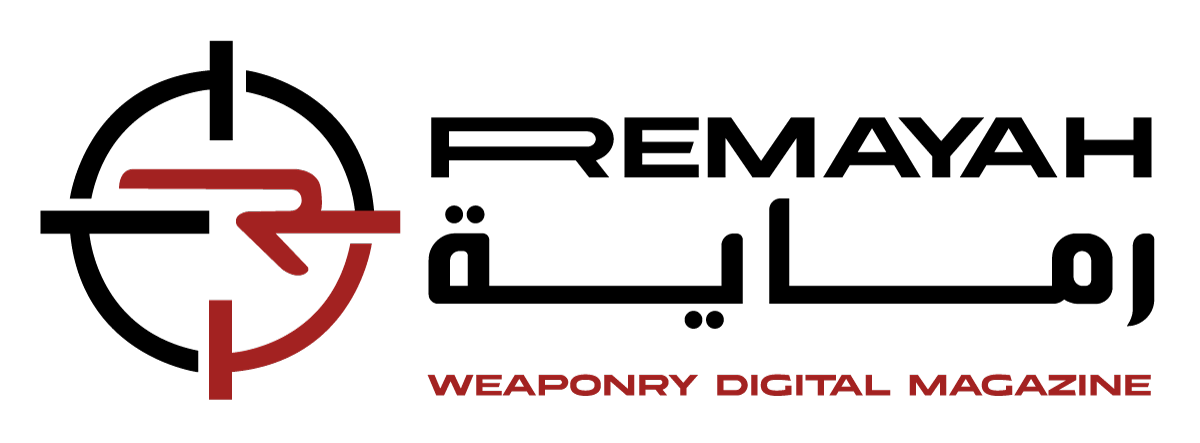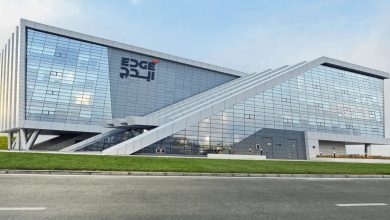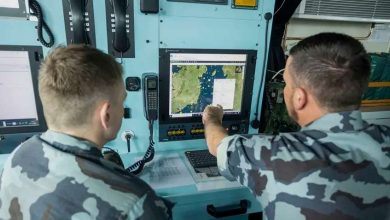
Leonardo Pioneers a New Era in Aerospace Defense Through Digital Transformation
Leonardo propels the digital evolution of the Aerospace, Defence, and Security (AD&S) sector via its national competence Hub in Genoa, which is pivotal in developing the Group’s primary initiatives and operations. The objective is to enhance Leonardo’s technological and product competitiveness by prioritizing the data-centric economy and data optimization to fortify the company’s essential engagements and facilitate digital evolution.
Leonardo’s commitment to digitalization – aligned with the company’s Be Tomorrow 2030 strategic framework – is grounded in, and emerges from, the collaboration between its core competencies and infrastructures. This commences with the HPC davinci-1, which boasts an architecture merging cloud flexibility with supercomputing capabilities and cybersecurity innovations. These strategic resources are central to the Leonardo Labs, an extensive Research & Development network rich in innovation, centered around eight research domains and involving approximately 60 emerging researchers.
Currently, the pinnacle of digitalization within the Aerospace, Defence and Security (AD&S) sector is illustrated through the development of digital twins for its platforms and technologies, thereby expediting design, enhancing performance, optimizing predictive maintenance, amplifying simulation potential (including the possibility of certification through simulation in aerospace), and virtualizing training.
The behavior modeling of products like aircraft, both fixed-wing and rotary-wing, utilizing big data, numerical simulation, and artificial intelligence represents a cutting-edge approach in this realm. The capability to analyze and correlate information from operational products and simulations within a virtual setting empowers Leonardo to speed up the design and innovation of materials (combining lightness and durability), performance (optimizing aerodynamics and energy efficiency), and customer service (leveraging augmented reality for maintenance and pilot training).
Implementing these methodologies in flight data analysis has enabled the creation of sophisticated applications for managing helicopter fleets (approximately 5,000 units globally), streamlining performance and maintenance operations. Maintenance is evolving significantly towards predictive strategies and remote support functionalities via collaborative digital platforms utilizing augmented reality tools. In relation to fixed-wing aircraft, predictive analysis facilitated by sensors and specialized electronic systems is extending to the real-time assessment of individual aircraft components. The aim is to hasten the so-called “digital transformation” of logistical support activities and technical processes while providing the framework to progressively introduce artificial intelligence tools, aimed at enhancing the efficiency and effectiveness of maintenance tasks.
The simulation of concurrent take-offs and landings of numerous helicopters on aircraft carriers and predictive modeling of ice accumulation on wings are two prominent instances of applications formulated within virtual frameworks. These competencies underpin the development of a new generation of aircraft conceptualized as a “system of systems,” capable of high levels of interconnectivity with additional systems and interoperability with unmanned platforms.
Numerical simulation coupled with data analysis from the perspective of the digital twin also impacts production chains. In this regard, Leonardo is executing a project for the digital interconnection and modernization of design and manufacturing processes on the production line of the ATR aircraft at the company’s facility in Pomigliano d’Arco (Naples).
Ensuring cybersecurity is critical for unlocking the full potential of data while guaranteeing operational continuity. Genoa is a central node in Leonardo’s network of cybersecurity centers, alongside Rome, Chieti, Florence, Milan, and Bristol; these centers devise and develop solutions aimed at safeguarding both corporate information assets and vital infrastructures and institutions from multifaceted threats, contributing to secure digitalization. Leonardo protects over 5,000 networks and 70,000 users across 130 nations. Specifically, in Italy, around 90,000 security incidents are monitored each second, with over 1,500 alerts addressed daily. In this landscape, digital twin technologies are employed to virtualize protected IT infrastructures and evaluate products and solutions to counter cyber assaults.
Data management, a crucial element for optimizing process efficiency, lies at the core of Leonardo’s offerings and is an integral aspect of its products. An illustration is the X-2030 platform, developed specifically to amplify the data supporting the resilience of essential infrastructures. X-2030 facilitates the integration and correlation of vast amounts of information from diverse sources – spanning aerial platforms, satellite data, field sensors, databases, social media, and open sources – leveraging cloud computing, supercomputing, and artificial intelligence. This solution forms the basis of Global Monitoring and Situational Awareness, enabling territorial control and monitoring, which supports informed decisions during emergencies related to hydrogeological safety and enhances citizen security, also in a preventative context. This application in emergency scenarios – urgent computing – enables objective evaluation and rapid response during extraordinary events of natural or human origin.
Another instance is the OCEAN software, created in Genoa, enabling dynamic and swift configurations for test and training systems for operators interacting with digital monitoring and control mechanisms.
A prospective frontier is linked to the research initiatives in robotics and quantum computing at the Leonardo Labs. Specifically, the latter serves as a technological accelerator and a central element for business growth across multiple domains: from cybersecurity to defense electronics and space.
In the realm of robotics, the ongoing projects in Genoa – in partnership with the Italian Institute of Technology and the University of Genoa – focus on developing adaptive robots designed for complex production environments, aiming to enhance operator safety, increase flexibility in unpredictable settings, and empower autonomous actions. The primary applications target the aerospace, civil protection, security, and defense domains.
Regarding quantum technologies, the projects span a wide array of applications. The most cutting-edge involves utilizing the davinci-1 HPC to simulate a quantum processor within a supercomputing framework, an essential prerequisite for interfacing with actual quantum computers. Leonardo’s quantum simulators, after optimization on the davinci-1, are employed to develop quantum logic programs, circumventing the challenges faced by today’s actual quantum computers and benchmarking their effectiveness against conventional systems to pinpoint where digital computers may dominate (quantum supremacy). With these capabilities, Leonardo emerges as the frontrunner in AD&S, initiating research on applying quantum technologies within the radar domain. The “Quantum Sensing Radar,” capable of transcending the existing limitations of traditional radars, enhances the detection range of recognizable objects and broadens the reconnaissance spectrum by using photon beams that can “navigate” obstacles.
For Leonardo, HPC, data, artificial intelligence, and cyber resilience are integral assets underpinning the contemporary digital industrial revolution. These are essential to investing in and uniting an expanding ecosystem of public-private entities, aiming to oversee and bolster this critical developmental phase, which is vital for growth that is sustainable environmentally, economically, and socially.
These assets, when enhanced with new capabilities, could also play a pivotal role in novel industrial and application domains, including healthcare, due to the increasing need for secure and shared data (electronic health records), telemedicine advancements (rehabilitation and surgical robotics), and predictive epidemiological analyses (epidemic management, precision medicine, and genomics). This sector in Genoa represents one of the most specialized and fertile development areas. In this environment, Leonardo is actively engaged in projects arising from specific collaborations, including partnerships with Dompé Farmaceutici for establishing the initial nucleus of a national digital health security infrastructure with cloud architecture, works with Movendo Technology, a biomedical enterprise, and participation in European research initiatives within the Digital Health sector.





